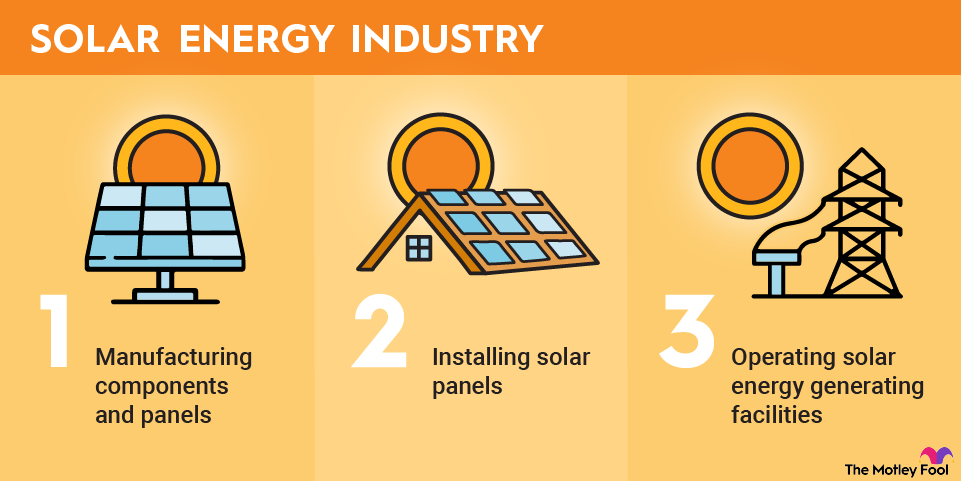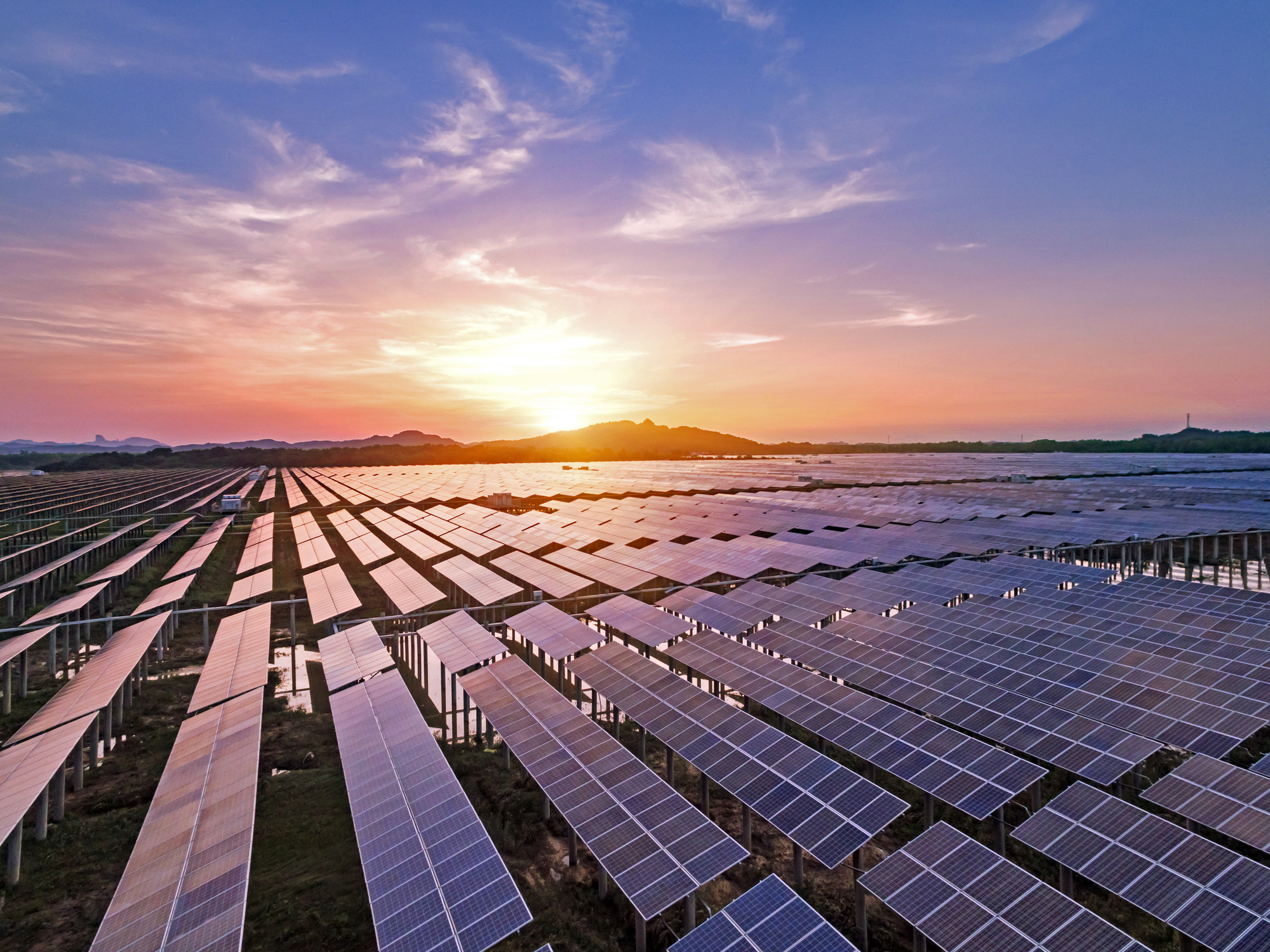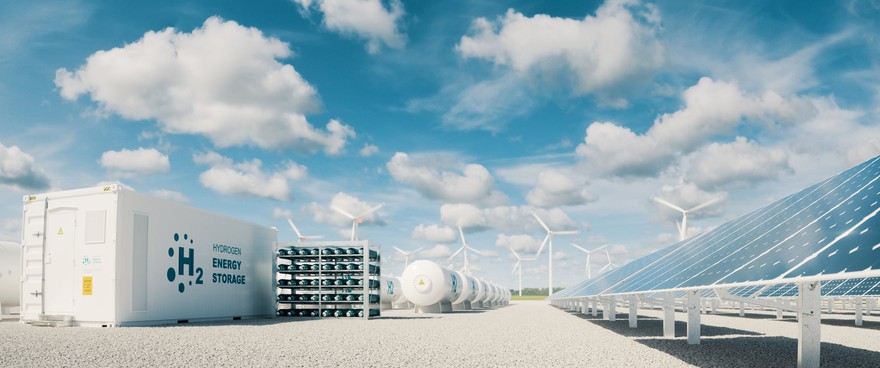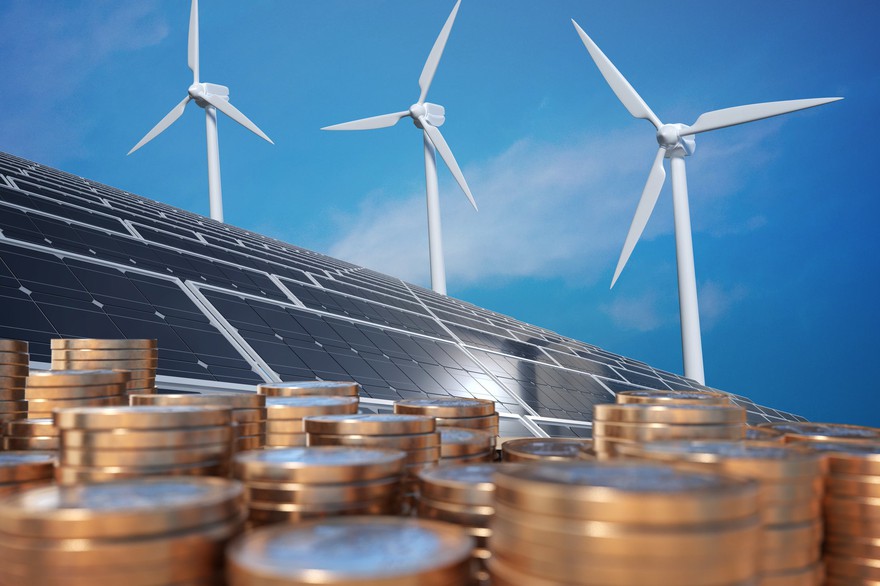The solar energy industry builds and installs devices to capture energy from the sun and convert it into electric power. Companies in the industry are working to transition the global economy from fossil fuels such as oil and natural gas to renewable energy sources. It will take trillions of dollars and many years to complete the transition, making the solar energy industry a compelling opportunity for long-term investors.
The sector encompasses a wide variety of companies with the following functions:

Best solar stocks to invest in 2025
Solar energy represents an enormous market opportunity. Global spending on solar was on track to reach $450 billion in 2025, surpassing all other generation technologies. That annual investment rate will likely rise in the future, powered by growing demand for clean energy, especially from power-hungry data centers used to support artificial intelligence (AI). That technology is driving accelerated electricity demand, making solar's future look even brighter.
Many companies focus on solar energy and should benefit from the sector's growth. However, not all have strategies designed to enhance value for their shareholders. Three solar energy stocks that stand out as the most worthy of investors' consideration are:
Here's why these solar stocks shine brightly in this rapidly expanding industry.
1. First Solar

NASDAQ: FSLR
Key Data Points

2. Brookfield Renewable

NYSE: BEP
Key Data Points
3. Enphase Energy

NASDAQ: ENPH
Key Data Points
Enphase Energy (ENPH +1.80%) is a pioneer in the solar industry. The company launched its revolutionary microinverter technology in 2006. It helps convert the direct current (DC) produced from sunlight into alternating current (AC) used in homes and businesses. The company has since expanded its capabilities to provide battery storage, EV chargers, energy management systems, and an installer platform.
As of late 2025, Enphase has shipped 83.1 million microinverters. It has also supplied more than 4.9 million systems to over 160 countries and shipped 2.1 GWh of energy storage systems.
That's only the beginning. The company's innovation has opened up new market opportunities, giving it an expanding share of potential revenue generated by each residential solar installation.
4. Array Technologies

NYSE: NEE
Key Data Points
NextEra Energy (NEE +0.83%) is one of the largest electric utilities and energy infrastructure companies in North America. It owns Florida Power & Light (FPL), the largest electric utility in the country, with about 12 million customers. Meanwhile, NextEra Energy Resources owns, operates, and develops energy infrastructure such as renewable energy projects, electricity transmission lines, and gas-power infrastructure such as pipelines and power plants.
FPL owns and operates a nearly 8 GW solar energy portfolio, the largest utility-owned solar portfolio in the country. FPL plans to add over 17 GW of solar and another 7.6 GW of battery storage over the next decade to support its customers' growing electricity needs. By 2034, FPL expects to get about 35% of its power from solar energy, up from 9% this year.
Meanwhile, NextEra Energy Resources had more than 38 GW of generation and storage capacity in operation in 2025, 21% of which was solar energy. The company expected to more than double its capacity by 2027, including plans to add at least 22.4 GW of additional solar capacity over the next few years.
Related investing topics
How to invest in solar energy stocks
Anyone can invest in solar energy stocks. Here’s a step-by-step guide on how to add one to your portfolio:
- Open your brokerage app: Log in to your brokerage account where you handle your investments.
- Search for the stock: Enter the ticker or company name into the search bar to bring up the stock's trading page.
- Decide how many shares to buy: Consider your investment goals and how much of your portfolio you want to allocate to this stock.
- Select order type: Choose between a market order to buy at the current price or a limit order to specify the maximum price you're willing to pay.
- Submit your order: Confirm the details and submit your buy order.
- Review your purchase: Check your portfolio to ensure your order was filled as expected and adjust your investment strategy accordingly.











